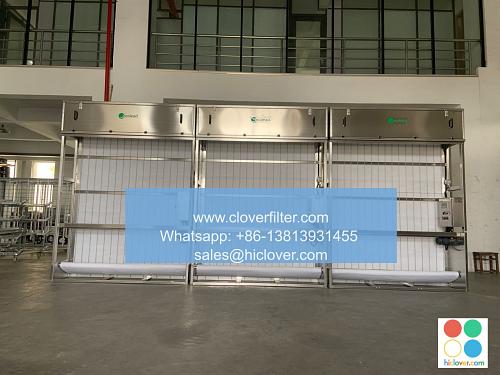Certification and Testing of Air Filters: A Review

The importance of air filtration systems cannot be overstated, especially in today’s world where indoor air quality has become a significant concern. With the rise of air pollution and respiratory diseases, it has become essential to ensure that the air we breathe is clean and free from particulate matter and gaseous pollutants. In this context, air filter certification and testing play a crucial role in verifying the performance and efficiency of air filters. This article aims to provide a comprehensive review of the certification and testing procedures for air filters, highlighting various application areas and key considerations.
Introduction to Air Filter Certification
Air filter certification is a process that involves evaluating the performance of air filters against specific standards and industry benchmarks. The primary objective of certification is to ensure that air filters meet the required standards for air quality and safety. There are several organizations that provide certification for air filters, including the Association of the Nonwoven Fabrics Industry (ANFI), the Air-Conditioning, Heating, Refrigeration Certification Board (ACHR), and the International Organization for Standardization (ISO).
Testing Procedures for Air Filters
The testing procedures for air filters involve evaluating their performance in terms of filter efficiency, pressure drop, and airflow resistance. The most common testing procedures include:
* Aerosol Challenge Testing: This test involves challenging the air filter with a known aerosol to evaluate its filtration efficiency.
* Particle Challenge Testing: This test involves challenging the air filter with particulate matter of varying sizes to evaluate its filtration efficiency.
* Gas Phase Testing: This test involves evaluating the air filter’s ability to remove gaseous pollutants from the air.
Application Areas for Certified Air Filters
Certified air filters have a wide range of application areas, including:
* Indoor Air Quality (IAQ) Systems: Certified air filters are used in IAQ systems to improve the air quality in buildings and homes.
* Industrial Air Purification Systems: Certified air filters are used in industrial air purification systems to remove particulate matter and gaseous pollutants from the air.
* Transportation Systems: Certified air filters are used in transportation systems, such as cars and airplanes, to improve the air quality and safety of passengers.
* Medical Facilities: Certified air filters are used in medical facilities to provide a safe and healthy environment for patients and staff.
Key Considerations for Air Filter Certification
When selecting a certified air filter, there are several key considerations to keep in mind, including:
* Filter Efficiency: The filter efficiency of the air filter, which is typically measured in terms of Minimum Efficiency Reporting Value (MERV) or European Standard (EU).
* Pressure Drop: The pressure drop of the air filter, which can affect the energy efficiency and performance of the system.
* Airflow Resistance: The airflow resistance of the air filter, which can affect the performance and efficiency of the system.
* Certification Standards: The certification standards of the air filter, which can vary depending on the application area and industry benchmarks.
Conclusion
In conclusion, air filter certification and testing are essential procedures that ensure the performance and efficiency of air filters. By highlighting various application areas and key considerations, this article aims to provide a comprehensive review of the certification and testing procedures for air filters. Whether you are looking to improve the indoor air quality in your home or workplace, or require a high-performance air filter for an industrial or medical application, certified air filters are an essential component of any air purification system. It looks like you’re ready to start a conversation, but I don’t see a prompt. Would you like to:
1. Ask me a question
2. Discuss a specific topic
3. Play a game (e.g. 20 Questions, Hangman, Word Chain)
4. Generate a creative story or idea
5. Get help with a problem or task
Let me know what’s on your mind, and I’ll do my best to assist you!

